
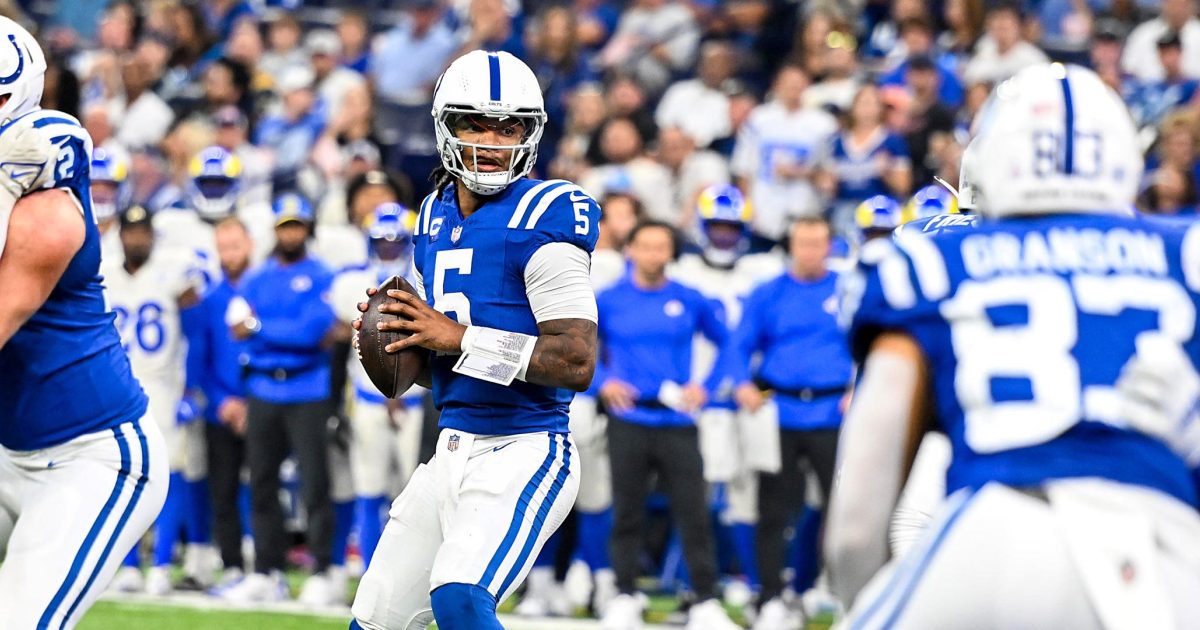
The Colts' official colors are blue, white, and black, creating a strong visual identity for the team. The team's primary color is Colts Blue, a distinct shade of blue that is prominently featured in their uniforms, merchandise, and team branding. The color blue symbolizes the team's history and pride in their home state of Indiana, while white accents maintain a classic, clean aesthetic that represents the team's tradition of excellence. The black color has been incorporated into the team’s alternate uniforms and logo, giving the Colts a modern edge while still paying homage to their storied past.
The team's logo, the iconic horseshoe, is synonymous with the Colts' identity. The horseshoe symbolizes good luck, and its placement on the Colts' helmets is one of the most recognizable logos in the NFL. It has been a key part of the Colts' visual identity since their inception in Baltimore and continues to represent the team’s heritage.
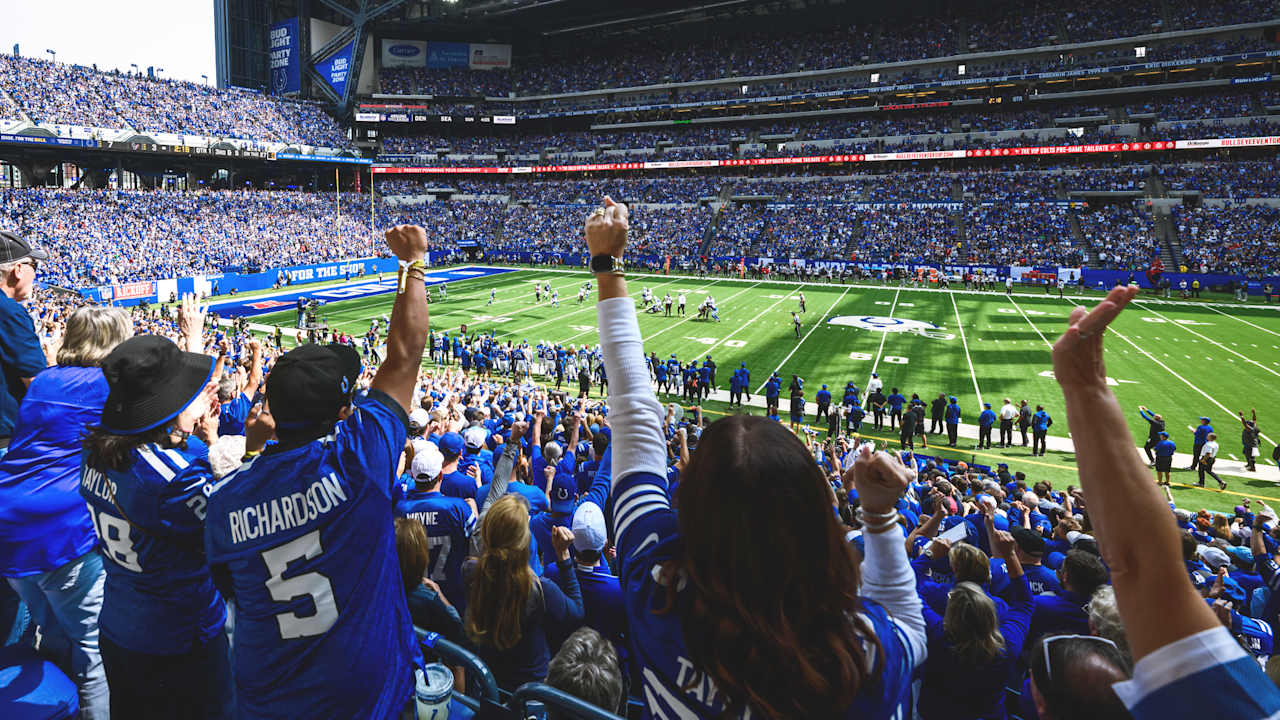
The Indianapolis Colts enjoy a passionate and dedicated fanbase, not only in Indianapolis but throughout the United States. Colts fans are known for their unwavering loyalty and deep-rooted connection to the team. The team's fanbase has grown significantly since the Colts’ move to Indianapolis in 1984, with Lucas Oil Stadium serving as a hub for fans from across the region.
The fanbase, often referred to as "Colts Nation," is known for its enthusiasm and pride. Whether the team is winning or facing challenges, the fans remain a constant source of support. Colts fans are present in every game, both at home and on the road, often filling the stands with blue jerseys and waving horseshoe-themed flags.
The Colts' fan culture is closely tied to the team's success, but it also extends to community engagement, with fans participating in local events and charity efforts organized by the team. The Colts' "Ring of Honor" inductions, stadium events, and fan interaction at training camps only solidify the bond between the team and its supporters.

The Indianapolis Colts are known for their strong organizational culture, built on values of discipline, excellence, and community involvement. The culture of the team is centered around hard work, teamwork, and accountability, which is reflected in both the players and coaching staff.
The team's success has largely been attributed to the leadership within the organization. Under former head coaches like Tony Dungy, the Colts adopted a calm and calculated approach to the game, focusing on preparation and mental toughness. This approach continued under Jim Caldwell and Chuck Pagano, and the emphasis on strong leadership and community engagement remains a cornerstone of the team.
The Colts’ locker room culture is another hallmark of the franchise. The team has long been known for its family-like atmosphere, where players are encouraged to support one another both on and off the field. This culture of brotherhood and mutual respect contributes significantly to the team's success on the field.
Off the field, the Colts are deeply involved in the Indianapolis community. From youth football programs to charitable donations and volunteering, the team actively engages with fans through events such as fan days, charity games, and school outreach programs. The Colts Foundation, established to support local charities and initiatives, is another example of how the team contributes to the community.

The Indianapolis Colts have had numerous iconic moments throughout their history, both on and off the field. These moments are a reflection of the team’s championship pedigree and have contributed to its identity as one of the most respected franchises in the NFL.
Arguably the most iconic moment in the franchise’s history, Super Bowl XLI marked the Colts’ first Super Bowl victory since the team moved to Indianapolis. The Colts defeated the Chicago Bears 29-17, with Peyton Manning leading the way as Super Bowl MVP. Manning’s victory in Super Bowl XLI solidified his place as one of the greatest quarterbacks of all time and ushered in a new era of success for the team.
While this moment occurred in Baltimore, it remains a foundational piece of Colts history. The 1958 NFL Championship Game against the New York Giants is widely regarded as one of the greatest games ever played in the history of American football. The Colts won 23-17 in overtime, with Johnny Unitas leading the way. This game is often credited with helping to popularize the NFL across the United States.
Peyton Manning’s final game as a Colt, a loss to the New York Jets in 2011, marked the end of an era for the Colts. Manning’s retirement after the 2011 season signaled the end of one of the most successful stretches in the team’s history. Manning's impact on the franchise is immeasurable, and his legacy continues to shape the team's identity, even as the Colts look to the future.
The Colts have had a history of dramatic comebacks and key moments, such as Andrew Luck's 2013 comeback win against the Kansas City Chiefs in the AFC Wild Card Game. The Colts were down by 28 points before mounting a historic comeback to win 45-44. Luck’s ability to lead the team to victory in such high-pressure situations earned him a spot as one of the franchise's all-time greats.
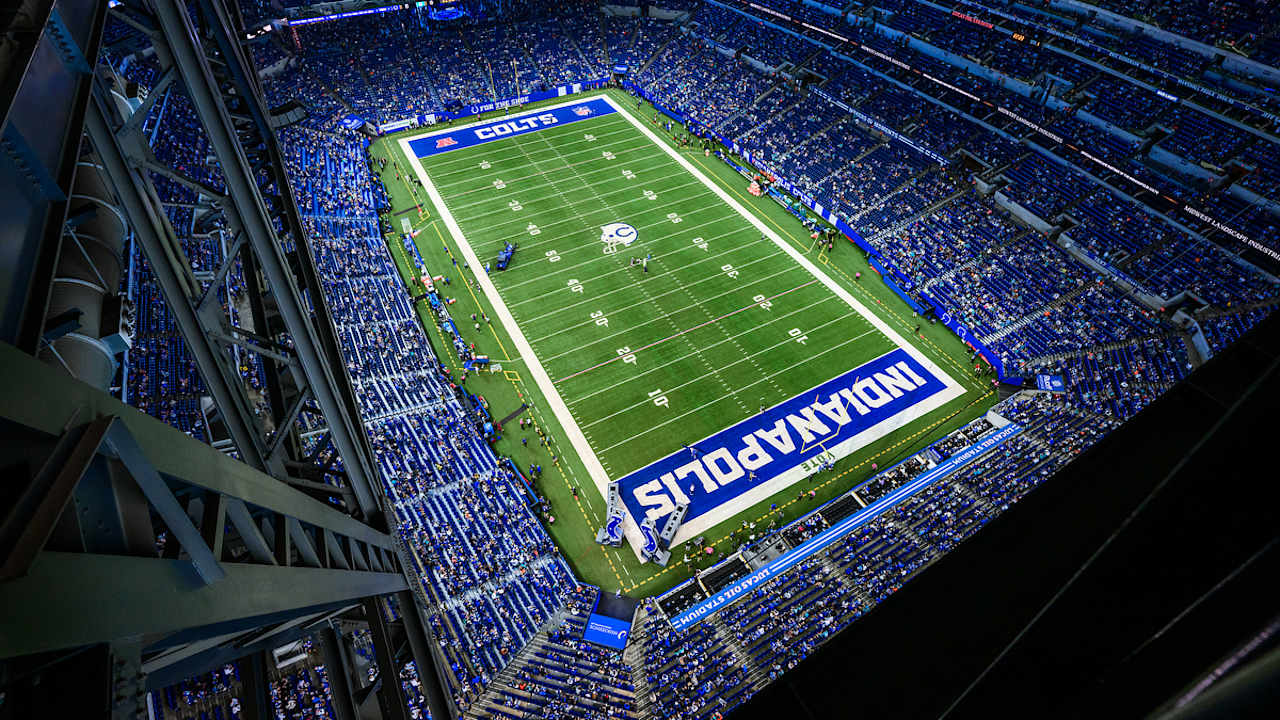
The Indianapolis Colts have played in two significant stadiums in their history: the RCA Dome (1984–2007) and Lucas Oil Stadium (2008–present).
The RCA Dome was the Colts’ home stadium from their arrival in Indianapolis until 2007. It was known for its distinctive dome roof, which provided a controlled environment for the team and fans. Although the RCA Dome had its charm, the Colts eventually outgrew the stadium, and the team moved to Lucas Oil Stadium in 2008.
Lucas Oil Stadium, with its retractable roof, opened in 2008 and quickly became one of the premier stadiums in the NFL. It is the site of Super Bowl XLVI (2012) and is known for its state-of-the-art amenities, including luxury suites, HD video displays, and replay monitors. The stadium’s size and modern design make it one of the most fan-friendly venues in the league, and it has hosted numerous events beyond football, such as NCAA basketball games and concerts.
/cdn.vox-cdn.com/uploads/chorus_image/image/58609223/76134818.jpg.0.jpg)
The Colts are part of the AFC South division, and within this division, they have fierce rivalries with the Houston Texans, Jacksonville Jaguars, and Tennessee Titans.
The Colts have long dominated the AFC South, particularly during the Peyton Manning era. However, the division has become increasingly competitive, especially with the rise of the Texans and the Titans. The Colts’ rivalry with the Texans has intensified over the years, with both teams vying for supremacy in the division.
The rivalry with the Titans has deep roots, dating back to the Colts’ time in the AFC Central division. While the Colts have typically had the upper hand, the rivalry remains fierce, with both teams frequently competing for the AFC South title.
In addition to divisional rivalries, the Colts have historic rivalries with teams like the New England Patriots. The rivalry between Peyton Manning and Tom Brady fueled the Colts-Patriots matchups in the 2000s, with games between the two teams often deciding playoff positioning and Super Bowl contention.

The Colts' history began in 1953 when Carroll Rosenbloom, a Baltimore businessman, acquired the assets of the Dallas Texans and relocated the franchise to Baltimore, Maryland. At the time, the team was part of the National Football League's (NFL) expansion, and the new Baltimore Colts immediately became a team with great promise. The Colts wore silver and green as their team colors in their early days, and they were a fresh addition to the NFL landscape.
Initially, the team struggled to find its footing. However, under the leadership of legendary quarterback Johnny Unitas, the Colts quickly became a force in the NFL. The 1958 NFL Championship Game, dubbed “The Greatest Game Ever Played,” became a defining moment in the team’s early history. The Colts defeated the New York Giants 23–17 in the first game to go into overtime, marking a turning point in the team’s fortunes and a watershed moment for the NFL itself.
The Colts went on to win back-to-back championships in 1958 and 1959, establishing themselves as one of the dominant teams in the league. The success of these teams was a direct result of the leadership of Weeb Ewbank as head coach and Johnny Unitas as quarterback. Their mastery of the game and their contributions to NFL history solidified the Colts’ position as an iconic franchise.
Despite this success, the Colts had mixed results in the following years, failing to repeat their early dominance. They continued to compete for titles and make playoff appearances, including a strong 1968 season where the team posted a 13–1 record. However, in the 1969 Super Bowl, the Colts lost to the New York Jets, famously upsetting their chances for further glory.
/cdn.vox-cdn.com/uploads/chorus_image/image/66751457/102589974.jpg.0.jpg)
The Colts' success in the 1960s can be largely attributed to head coach Don Shula, who took over the team in 1963. Under Shula’s guidance, the Colts became a formidable force in the NFL. The team achieved a 12–2 record in 1964, marking the beginning of Shula’s era of dominance.
In 1968, the Colts captured their third NFL Championship by defeating the Cleveland Browns in a dominating 34–0 victory. This win sent the Colts to Super Bowl III, where they faced the New York Jets. The Colts were heavy favorites but were stunned by a 16–7 loss to the Jets, marking one of the most significant upsets in Super Bowl history. The defeat was a harsh blow to the Colts and their legacy, but it didn’t tarnish their earlier achievements. The Colts continued to be one of the premier teams in the league, but Shula left in 1969, marking the end of an era.

In the aftermath of Shula’s departure, the Colts brought in Don McCafferty as head coach. Under his leadership, the Colts emerged from a rebuilding phase to reclaim NFL glory. The 1970 season was particularly noteworthy, as the Colts posted an impressive 11–2–1 record, which propelled them to a division title. The Colts then went on to defeat the Dallas Cowboys 16–13 in the inaugural post-merger Super Bowl, Super Bowl V, earning their first Super Bowl title and their fourth NFL Championship.
However, despite winning the Super Bowl, the team struggled in the years that followed. They experienced playoff heartbreak in the 1971 AFC Championship, losing to the Miami Dolphins, and then endured a decline in the following years. By 1972, the Colts were no longer the powerhouse they had been in the past.
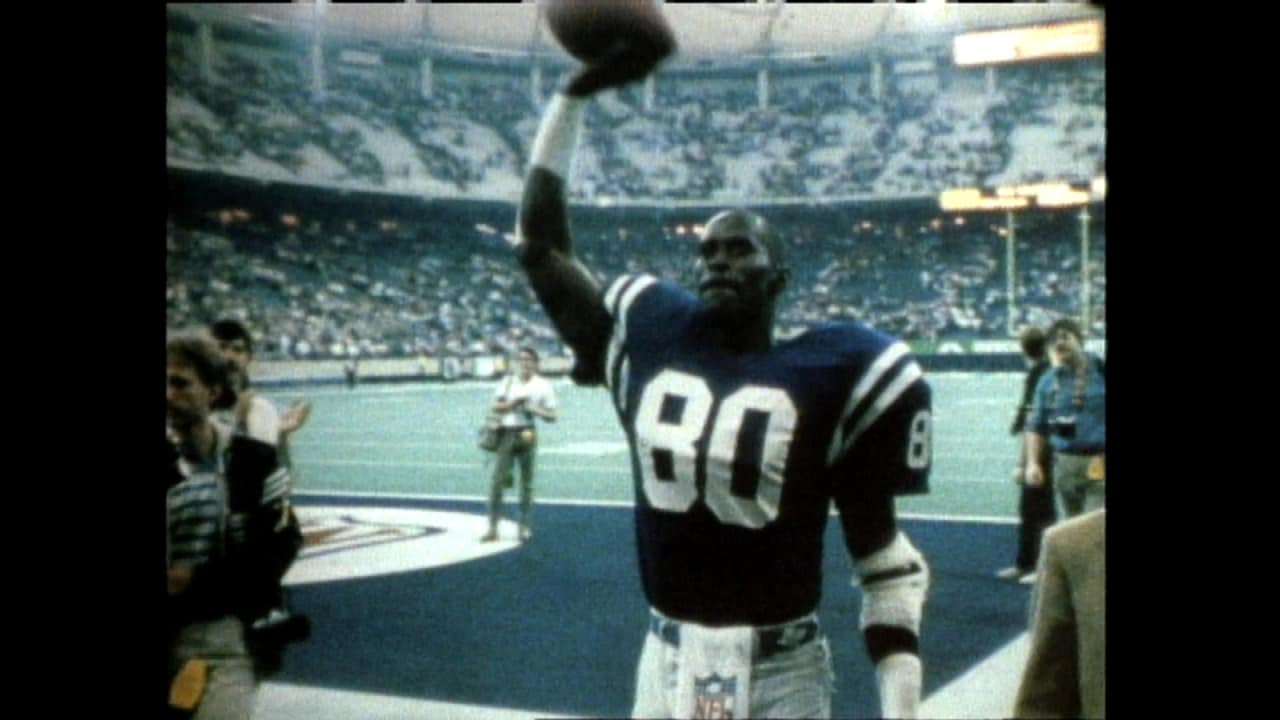
The 1970s were a turbulent decade for the Colts. Despite occasional playoff appearances and individual successes, the team endured several losing seasons, culminating in a 1981 season where they set an NFL record for allowing the most points in a season. In 1984, team owner Robert Irsay made a controversial decision to relocate the Colts from Baltimore to Indianapolis, a move that would change the franchise’s future forever.
The Colts' departure from Baltimore was dramatic and controversial. In the middle of the night on March 28, 1984, Irsay moved the Colts' franchise to Indianapolis in a covert operation involving Mayflower trucks that transported all of the team’s equipment, players’ belongings, and personnel to their new home. This midnight move led to legal battles with the city of Baltimore, which would only be resolved in 1986.
The Colts’ new home, Indianapolis, welcomed the team with open arms, with over 143,000 requests for season tickets flooding in. The team began playing at the Hoosier Dome, which was renamed the RCA Dome in 1984. The move to Indianapolis marked the beginning of a new chapter for the Colts.
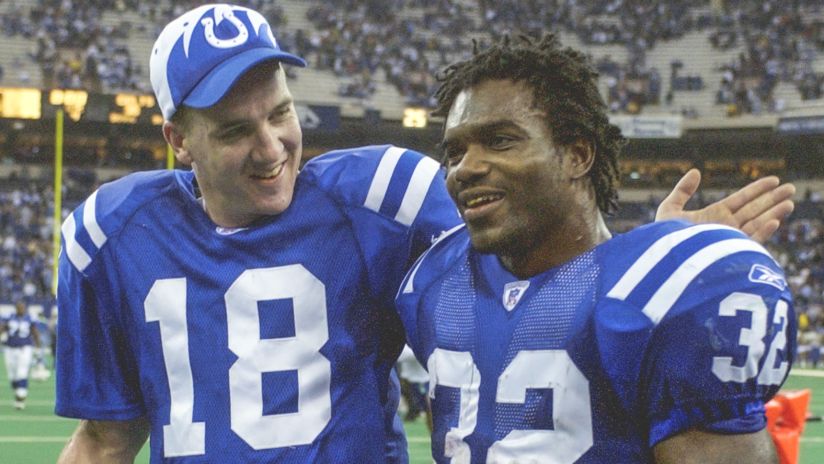
The Colts’ early years in Indianapolis were not without challenges. Despite a large fanbase and strong support, the team struggled on the field. The Colts failed to reach the playoffs for the first decade in Indianapolis, with some seasons marred by poor performances and limited success.
The Colts underwent several coaching changes and organizational shifts during the 1990s, including a coaching change in 1992, when Ted Marchibroda returned to the team. The franchise had its first taste of success in the 1995 season, when they qualified for the playoffs for the first time in Indianapolis. In the 1996 and 1997 seasons, the team showed promise, but it was not until 1998 that the Colts were finally ready to turn the corner.
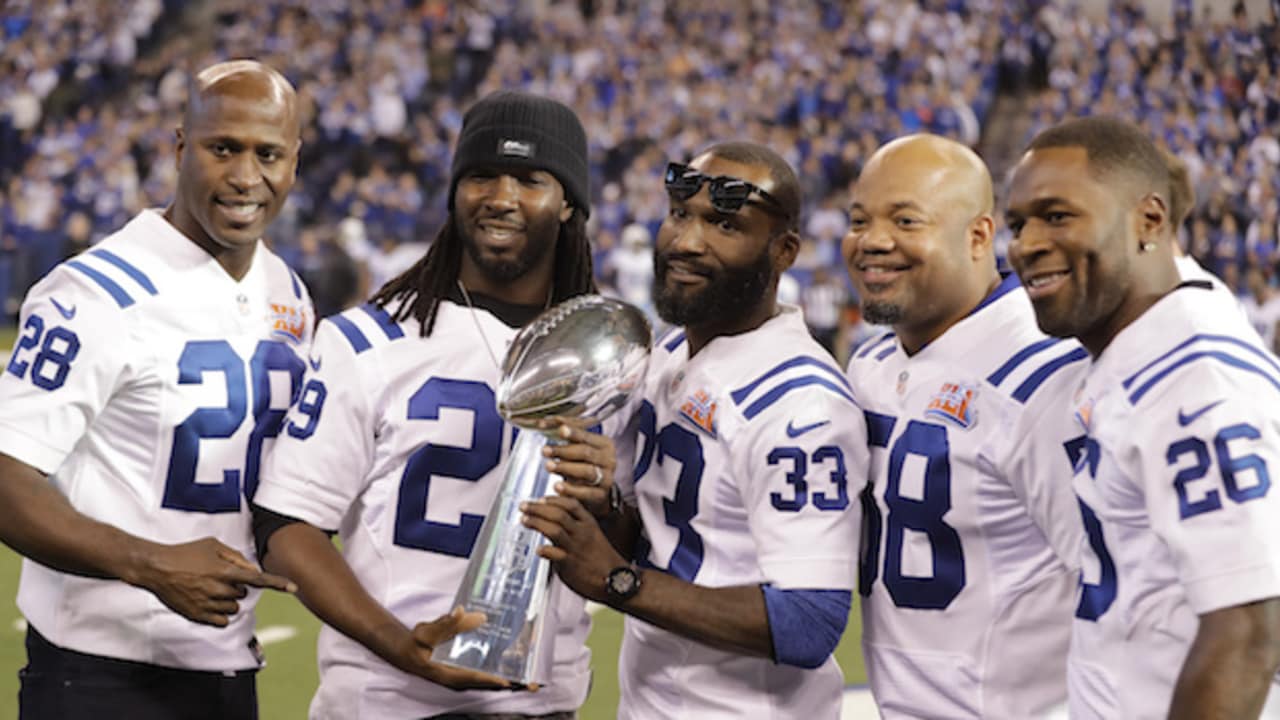
The turning point for the Colts came in 1998, when the team selected Peyton Manning with the first overall pick in the NFL Draft. Manning’s arrival signaled the beginning of one of the most successful eras in NFL history. Manning quickly became the face of the franchise, transforming the Colts into a Super Bowl contender year after year.
Under head coach Tony Dungy, the Colts became a dominant force in the AFC, regularly winning division titles and making deep playoff runs. Manning’s leadership, along with key players like Edgerrin James, Marvin Harrison, and Reggie Wayne, helped solidify the team’s position as one of the most talented rosters in the league.
The 2006 season was the pinnacle of the Colts’ success during the Manning era. The Colts finished the regular season with a 12–4 record and made a dramatic playoff run. In Super Bowl XLI, the Colts defeated the Chicago Bears 29–17, capturing their first Super Bowl victory since the franchise moved to Indianapolis. Manning was named Super Bowl MVP, and the victory solidified his legacy as one of the greatest quarterbacks in NFL history.

The years following the Colts' Super Bowl victory were marked by consistent success. The team posted strong regular-season records in 2007 and 2008, but failed to reach the pinnacle of success again. In 2009, the Colts made another Super Bowl appearance, but this time, they were defeated by the New Orleans Saints in Super Bowl XLIV, ending their hopes for a second championship with Manning at the helm.
In 2011, Manning missed the entire season due to a neck injury, and the Colts endured their worst season in over a decade, finishing with a 2–14 record. Manning's injury and the team's struggles led to a difficult decision: the Colts released Manning, and the team’s future direction was uncertain.

In 2012, the Colts selected Andrew Luck with the first overall pick in the NFL Draft, marking the beginning of a new era for the team. Luck quickly became the face of the franchise, leading the team to the playoffs in his rookie year. Under head coach Chuck Pagano, the Colts showed resilience, making the playoffs in multiple seasons, including a dramatic comeback victory against the Kansas City Chiefs in the 2013 Wild Card Game.
Luck’s leadership and the Colts' offensive firepower, along with key players like T.Y. Hilton and Vontae Davis, gave the team a new identity. However, despite consistent success, the Colts struggled to reach the Super Bowl during Luck's tenure, and his career was marred by injuries, which led to his sudden retirement in 2019.

Following Luck’s retirement, the Colts entered a period of transition, with Jacoby Brissett and later Philip Rivers taking over at quarterback. The team’s fortunes fluctuated during these years, with the Colts making the playoffs in 2020 but falling short in the Wild Card round. In 2021, the Colts traded for Carson Wentz, but his struggles led to a change at quarterback once again.
In 2022, the Colts hired Jeff Saturday as interim head coach after a disappointing 3-5-1 start to the season. The 2023 season brought hope as the team hired Shane Steichen as the new head coach and selected Anthony Richardson in the 2023 NFL Draft.
The Indianapolis Colts continue to rebuild, looking forward to the future with new leadership and a young, talented roster. As the team builds on its rich history, the future remains promising for the Colts as they strive for another championship.

The Indianapolis Colts were initially owned by Carroll Rosenbloom, who moved the team to Indianapolis in 1984. Following Rosenbloom’s passing, his ownership stake was passed to Robert Irsay, who took control in 1972. After Robert Irsay’s death in 1997, his son Jim Irsay became the principal owner of the Colts.
Jim Irsay has been instrumental in shaping the Colts into a competitive NFL franchise, and under his leadership, the team has achieved significant success, including a Super Bowl victory in 2007 and several playoff appearances. Irsay is known for his passionate involvement in the team, as well as his commitment to both the Colts and the city of Indianapolis.
In 2025, Jim Irsay passed away at the age of 65. Following his death, Carlie Irsay-Gordon, Jim’s oldest daughter, took over as the principal owner and CEO of the Colts. The transition was a smooth one, as Carlie and her sisters, Casey Foyt and Kalen Jackson, inherited an equal ownership stake in the team. Carlie was appointed as the CEO, with Casey assuming the role of executive vice president and Kalen taking on the position of chief brand officer and president of the Indianapolis Colts Foundation.
The Irsay family remains deeply committed to maintaining the Colts' legacy while steering the organization toward future success.

The Indianapolis Colts operate under a well-organized structure that includes key leadership roles, a strong front office, coaching staff, and a dedicated player development team. Here’s an overview of the club’s structure and key staff members:
The Irsay family is involved in the strategic direction of the team, making important decisions related to staffing, operations, and community relations. The transition to a family-run ownership model ensures a stable foundation for the club’s future.
The general manager oversees the football operations, player acquisitions, and team-building strategies. Chris Ballard, who joined the Colts in 2017, has played a crucial role in restructuring the roster and positioning the team for future success. Ballard’s draft selections, trades, and personnel decisions are integral to the team’s competitive outlook.
The coaching staff is responsible for the Colts' on-field performance, implementing game plans, and developing player talent. The Colts are committed to hiring top-tier coaches to develop their players and sustain a competitive edge in the league.
The football operations staff, including scouting, training, and personnel management, are responsible for the identification and development of new talent. The Colts are known for investing in their scouting and development departments to ensure they are competitive in the ever-changing NFL landscape.
The special teams and strength coaching departments are crucial for player development, injury prevention, and game preparedness.

The Indianapolis Colts operate as a for-profit organization with revenue primarily coming from ticket sales, merchandise, sponsorships, and TV deals. The team’s financial success is heavily influenced by its on-field performance, stadium revenue, and brand value. Here’s a breakdown of key financial aspects:
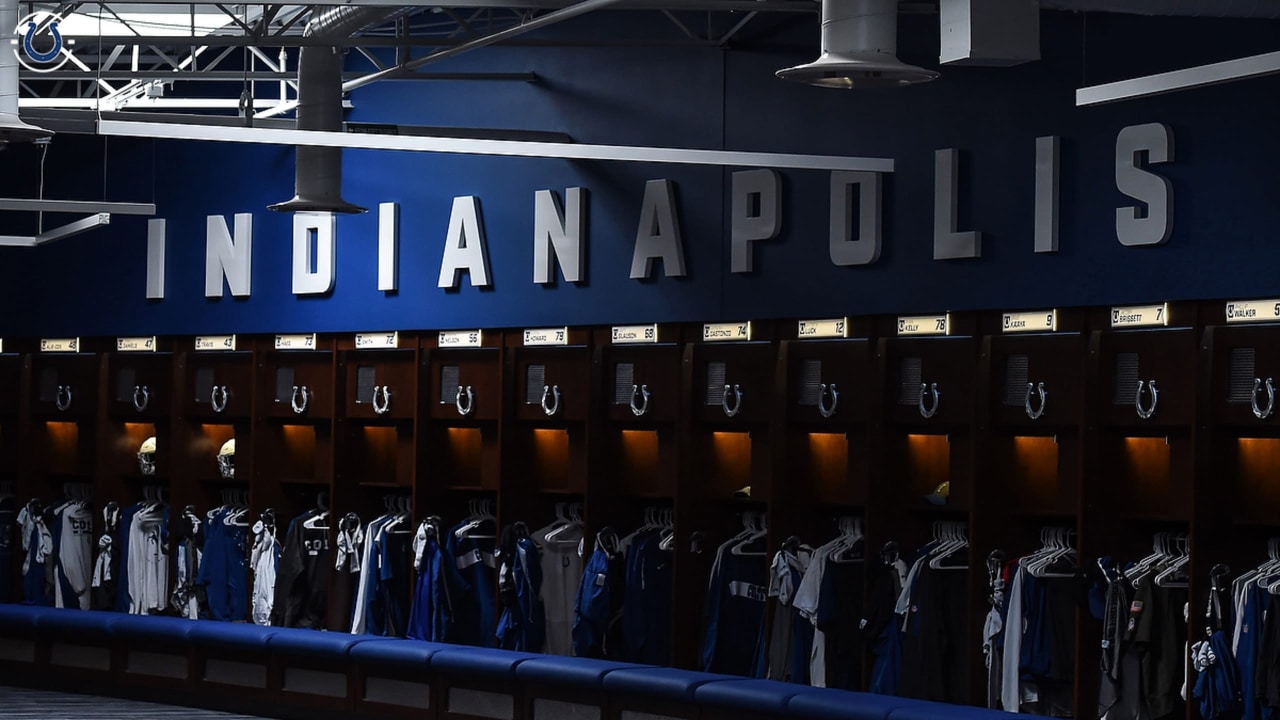
The infrastructure of the Indianapolis Colts is a vital part of the team’s ability to compete at the highest level in the NFL. From their state-of-the-art stadium to training facilities and fan engagement, the Colts have invested heavily in their infrastructure to maintain their competitive edge.
The Lucas Oil Stadium has been the home of the Colts since 2008 and is one of the most modern and technologically advanced stadiums in the NFL. The stadium features a retractable roof, which allows the Colts to play games in both outdoor and indoor conditions, and can accommodate up to 70,000 spectators. It is used for a variety of events, including NCAA basketball tournaments, concerts, and Super Bowl XLVI in 2012.
The stadium features luxury suites, HD video displays, and numerous concessions. The Colts’ gameday experience is top-tier, with fan-friendly features and cutting-edge technology enhancing the overall experience.
The Colts train at the Indiana Farm Bureau Football Center, which houses the team’s practice fields, locker rooms, medical facilities, and team offices. The center is dedicated to ensuring that players have access to world-class facilities for rehabilitation, physical therapy, and training. The team’s investment in its facilities reflects the Colts’ commitment to maintaining a competitive edge in player health and development.
The Colts prioritize engaging with their fanbase, both in Indianapolis and across the country. The team has invested in social media and digital platforms to connect with fans, keep them updated on team news, and promote events and sponsorships. The Colts’ cheerleading squad, fan events, and community outreach programs all play a key role in keeping the Colts connected to their fanbase.
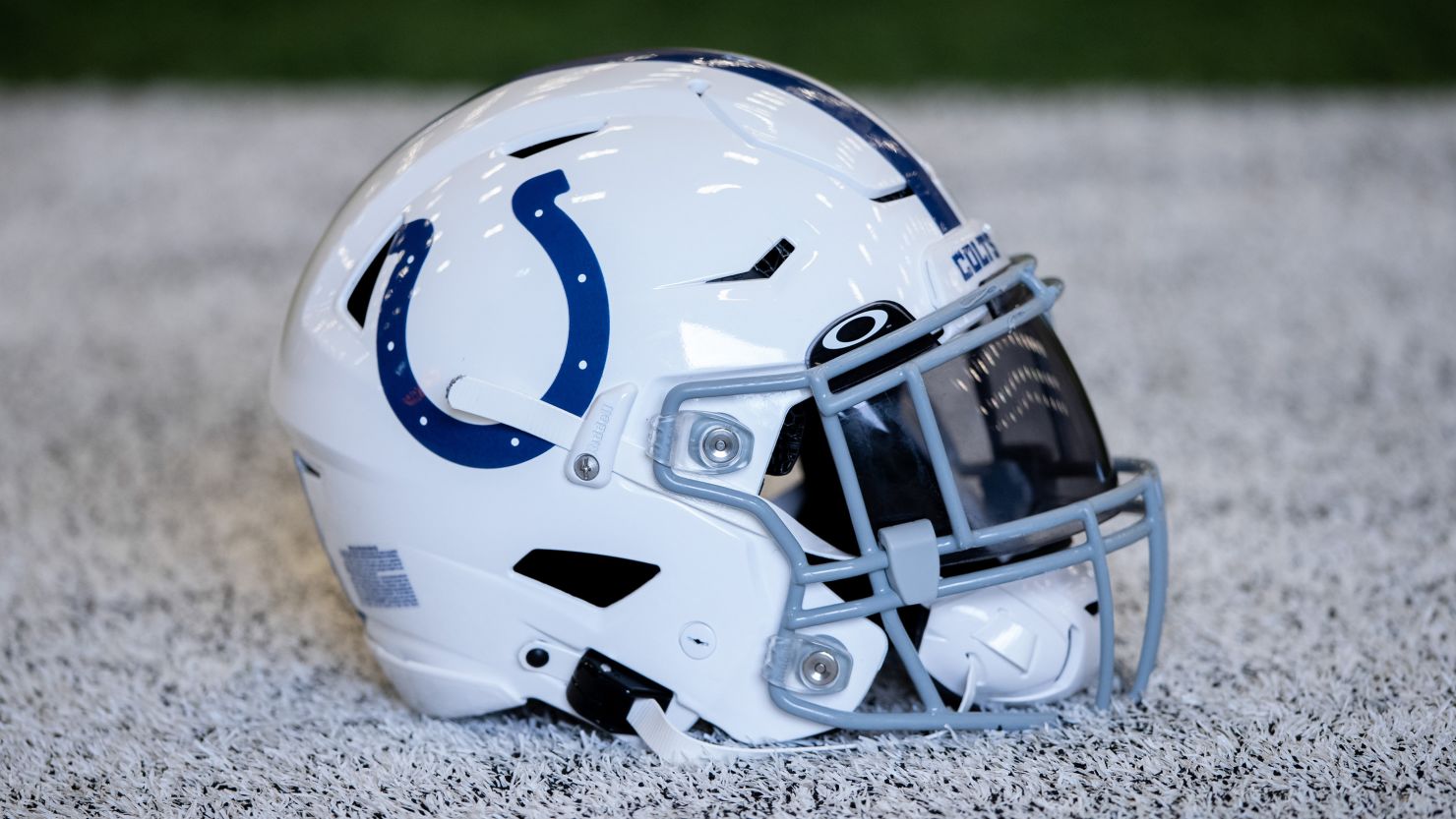
The Colts’ long-term goals are focused on consistent performance, winning championships, and maintaining a connection with their fans. Here are the key objectives for the team’s future:
The Colts are committed to building a championship-caliber team through smart draft picks, player development, and free agency acquisitions. After a rebuilding phase following the retirement of Andrew Luck, the Colts aim to return to contention, with a focus on solidifying the quarterback position and improving both the offensive and defensive lines.
The Colts are deeply involved in the Indianapolis community, with a focus on supporting local charities, youth football programs, and other community-based initiatives. The team’s Colts Community Tuesdays, youth camps, and foundation events aim to inspire future generations and give back to the city.
The Colts’ leadership aims to ensure long-term financial stability while balancing competitive team-building efforts. The organization aims to maintain a strong financial footing, balancing revenue from ticket sales, sponsorships, and merchandising with player salary expenditures.
As part of their commitment to staying competitive, the Colts seek to enhance the fan experience through cutting-edge technology and stadium features. They continue to invest in digital platforms, creating opportunities for fans to interact with the team and access exclusive content.
NFL Championships:
Super Bowl Appearances:
Conference Championships:
Division Championships:
Pro Football Hall of Fame Players:
Ring of Honor Inductees:
Books:
Websites:
Articles:
Interviews and Documentaries:


Becoming a leading global provider of digital solutions and services for the sports industry, enabling our clients to achieve their goals and reach their full potential.
We aspire to be a trusted partner and advisor to our clients, leveraging our expertise and passion for sports to help them succeed in a rapidly changing market.








